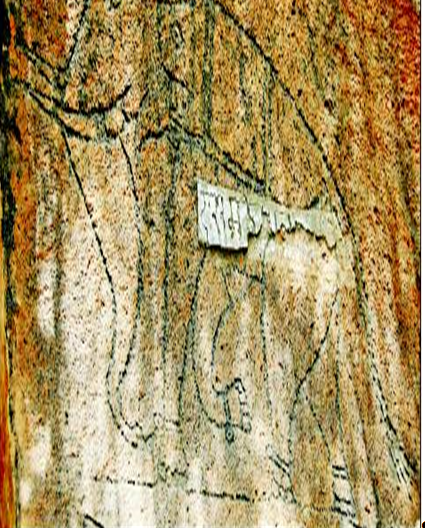Archaeology and Monuments: India
m (Protected "Archaeology: India" ([edit=sysop] (indefinite) [move=sysop] (indefinite))) |
Revision as of 11:41, 19 February 2014
This is a collection of articles archived for the excellence of their content. Readers will be able to edit existing articles and post new articles directly |
Rock carvings, Delhi: JNU
Rock carvings unearthed at JNU, but ASI prefers to bury history
Neha Lalchandani & Richi Verma TNN
The Times of India, July 16, 2011
New Delhi: Jawaharlal Nehru University staff had discovered some ancient rock carvings on the campus in 2007 and had informed the Archaeological Survey of India. An inspection was carried out later in the year and ASI officials, who were inclinedthen tobelievethatthe carvings held promise of being an important find, were to submit a report on their carbon dating.Four years down the line, when the campus is undergoing massive changes due to construction work, ASI is yet to determine whether the findings have authentic historical significance or not.Dr Surya Prakash, who has been in touch with ASI since 2007, said that initially ASI was equally excited about the find but over the years officials stopped responding to phone calls and emails.
“First we were told that the staff was busy with Commonwealth Games preparations, but once that was over ASI started ignoring our calls. We have not heard from them,” he said. Sources said the dating was important also because there were more such historical remains likely to be found in JNU and many mightbe getting destroyedin the construction work going on in the campus.
BR Mani, joint director general ASI told TOI: “The etchings could be from the medieval times. While ASI cannot declare it of national importance because there are uncertainties about their origin, the university should definitely preserve them and ASI will be glad to assist in any matter. Some of the carvings could be new and it requires more investigation.”
Former director general of ASI Dr R C Aggarwal, who saw pictures of the carvings, said: “The engravings are definitely historical and appear to be from the medieval times.
The elephant engraving is a completefigure andis fully decorated. There should be a corresponding figure to this one as the one found looks to be in motion. This kind of style is found in forts and palaces of Rajasthan. JNU should definitely preserve these findings and display it as part of their legacy. The carvings are in granite and should be maintained by fencing or something.” Dr Aggarwal is now principal director (architectural heritage) of INTACH.
Despite repeated attempts,ASIDelhicirclechief KK Mohammad remained unavailable. ASI officials, however, said that they would ask Delhi circle to submit a report on the issue along with photographs. While the Delhi circle should have informed the headquarters of the discovery when JNU reported it in 2007, officials told them about it only earlier this week. “When the Delhi circle team visited JNU last year, they said that the findings did not have much significance and there were just one or two letters engraved in the stone.
However, we will reassess the findings to ascertain what their historical links are,” said a senior ASI official.
ASI sources said that based on historical studies, it was quite possible that JNU did have archaeological remains. Though Delhi circle of ASI appraised these etchings about four years back, officials have kept the university waiting by not making their observations official. “When the ASI team came to JNU, they agreed that the etchings could have great historical significance.
It has taken them four years to finally say that the findings are insignificant. And if that was the case why have the officials still not informed us. We had proposed removing the rock and placing it in safe custody, but ASI said that we shouldn’t move it till they have studied it properly,” said Prakash.
